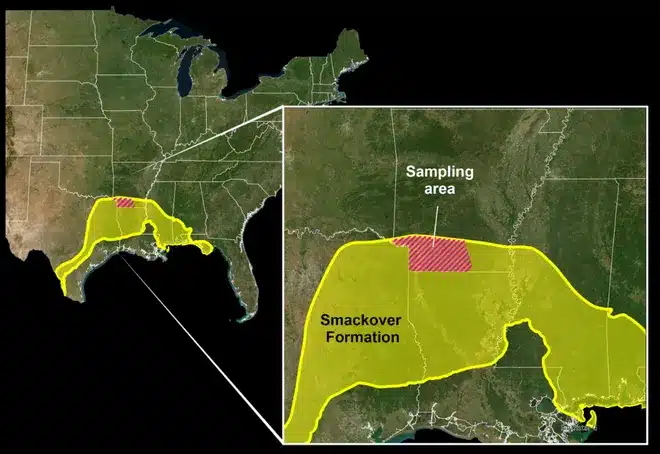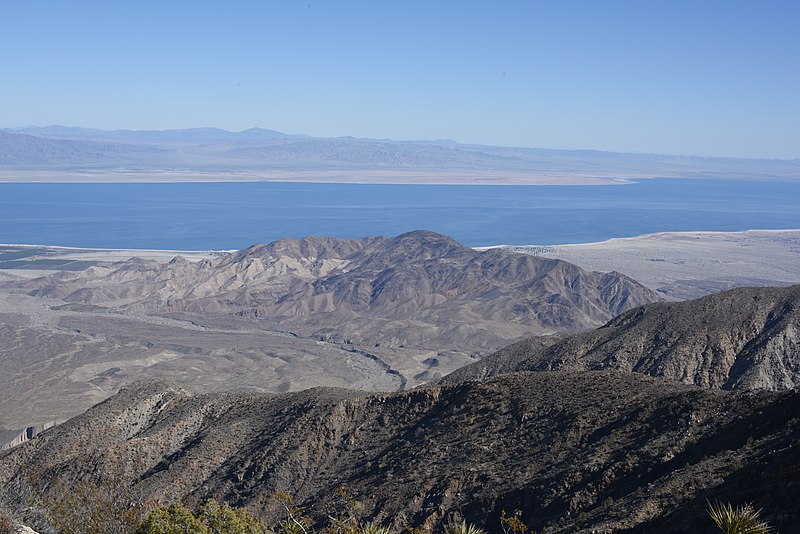Vast Deposit of Lithium for Batteries in Arkansas Could Be Worth up to $150B
The California Gold Rush began on January 24, 1848, when James Marshall discovered gold in California. The gold rush in the United States prompted a vast migration to California, the progressive and forward-thinking home state of EVinfo.net. California leads the American EV revolution, with over 25% adoption in 2024, according to Veloz.
The “new gold rush” in 2024 is for lithium, the main element in electric vehicle (EV) batteries. Lithium is an element, with the symbol “Li” and atomic number 3; it is classified as an alkali metal on the periodic table. Along with EV batteries, lithium is also used in large utility-scale or smaller-scale home and business energy storage, known as a battery energy storage system (BESS). Uses of a BESS enables greater usage of renewable energy, storing the energy during periods of high availability, for example storing solar energy when the sun is shining. One industry-leading example is the new GM Energy PowerBank, a stationary storage product aimed at enhancing the energy flexibility for EV owners and households, a superior choice to many competing home energy batteries.
Lithium is also in wide use as rechargeable batteries for a wide range of electric and electronic devices, such as smartphones and laptop computers. Lithium has been nicknamed “white gold” and “the new gasoline.”

Recent Discovery of Vast Lithium Reserves in Southern Arkansas, Highlighted by the U.S. Geological Survey
The recent discovery of vast lithium reserves in southern Arkansas, as highlighted by the U.S. Geological Survey (USGS), could have a transformative impact on the global energy landscape. The resource is currently in high demand, but global supply has been limited, making this potential discovery a significant breakthrough.
The USGS suggests that ancient brine, dating back to the Jurassic period and located deep beneath southern Arkansas, could contain between 5 and 19 million tons of lithium. This amount would be enough to meet the projected world demand for lithium car batteries nine times over, signaling a potential shift in the U.S.’s ability to produce its own lithium supply rather than relying on imports. If successfully tapped, this resource could reduce the bottleneck in lithium production and help accelerate the adoption of renewable energy technologies.
In the USGS map below, a geological area called the Smackover Formation is highlighted in yellow. The sampling area, marked in red, is located in Southern Arkansas. The sampling area was found to have high levels of lithium reserves.

Ensuring the Lithium Mining Does not Damage the Environment
The discovery of substantial lithium reserves in southern Arkansas presents not only an opportunity but also a significant environmental challenge. Lithium extraction is notoriously complex and can have serious environmental consequences, particularly regarding water depletion and ecosystem disruption. Traditionally, lithium is extracted either through hard rock mining or by evaporating water from brine deposits, both of which can have detrimental effects on local water resources, soil, and biodiversity.
In the case of Arkansas, the lithium is trapped in ancient brine deposits deep underground. Extracting it without harming the environment, especially the water table, will require innovative methods. Lithium extraction from brine typically involves pumping large amounts of water to the surface and then processing it to isolate the lithium. This process can reduce the availability of fresh water in the area and disrupt local ecosystems.
The fact that companies like Exxon are already showing interest in developing methods to mine this lithium suggests that significant resources will be invested in finding a more sustainable approach. Some companies are exploring cleaner technologies for lithium extraction, such as direct lithium extraction (DLE), which could potentially minimize water use and environmental impact. DLE technology works by filtering lithium out of the brine using specific chemicals or membranes, returning the rest of the water underground, but it is still in the experimental phase and requires scaling.
The challenge in Arkansas will be to balance the enormous economic and technological potential of these lithium deposits with the need to protect the environment. Developing environmentally responsible methods of extraction will be crucial if this resource is to be tapped without causing long-term damage to the ecosystem and water supplies of the region.
Does the US Have Enough Lithium?
The U.S. currently relies on imports for about 25% of its lithium supply, a situation that poses challenges as the demand for this critical mineral continues to rise with the growth of electric vehicles (EVs) and renewable energy storage. Lithium is essential for batteries, and with most of the global supply chain centered in China, the U.S. faces significant dependency risks. In response, the nation is working to expand domestic battery manufacturing and secure its own sources of critical minerals, including lithium, as part of a broader federal strategy to protect manufacturing and supply chains.
In December 2023, EVinfo.net reported on a vast amount of lithium found at California’s Salton Sea. California’s Salton Sea has garnered attention as a potentially massive source of lithium, with Governor Gavin Newsom dubbing the area the “Saudi Arabia of lithium” during a tour with President Joe Biden. While the comparison may seem bold, the Department of Energy (DOE) estimates that the lithium reserves beneath the Salton Sea could power batteries for over 375 million electric vehicles (EVs), making the region’s potential undeniably significant.

The estimated 18 million tons of lithium within the Salton Sea region could dramatically shift the U.S.’s position in the global lithium supply market. Given that the market value of lithium was estimated at $29,000 per ton in 2023, the 18 million tons of lithium in the Salton Sea represents a staggering potential value of $540 billion. When the Salton Sea’s lithium potential is combined with the recent find in Arkansas, it is seeming like America will have more than enough of a domestic supply than it will ever need.

Electric Vehicle Marketing Consultant, Writer and Editor. Publisher EVinfo.net.
Services